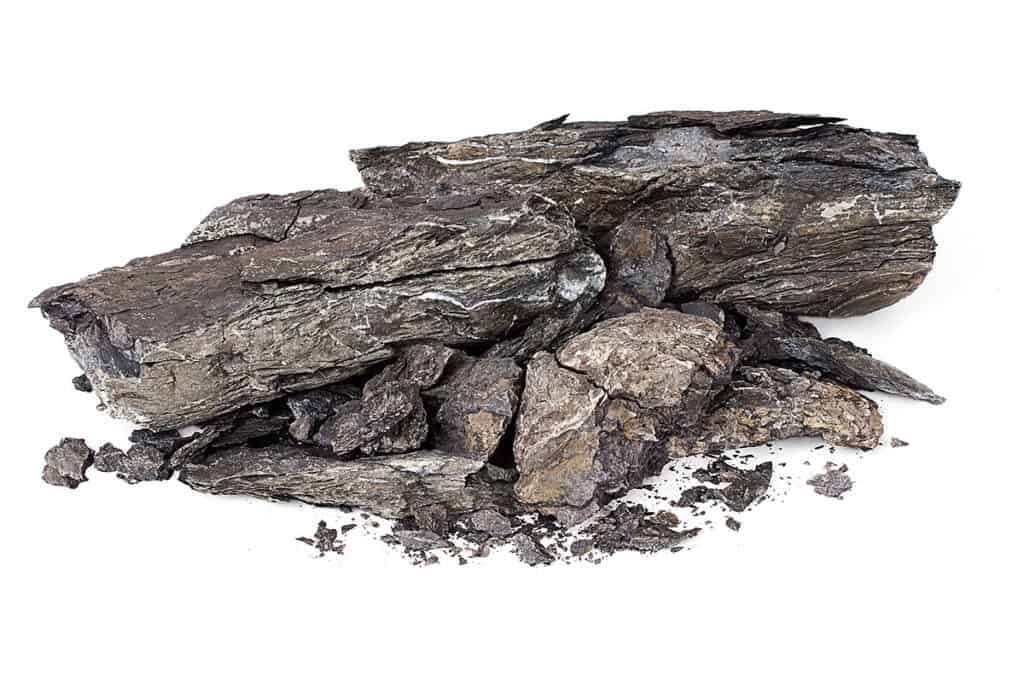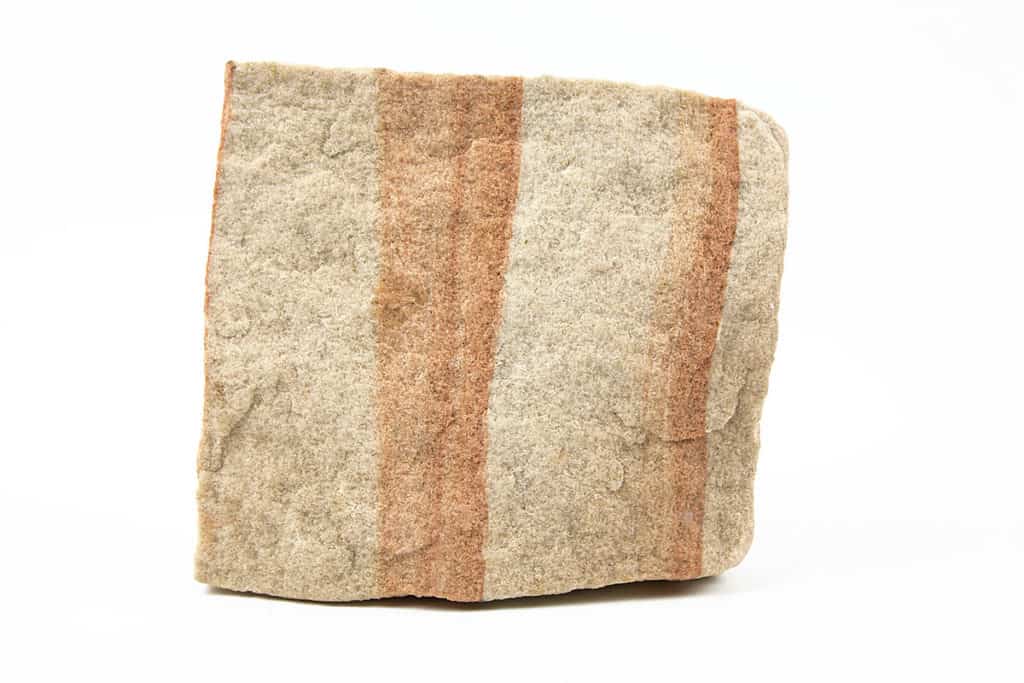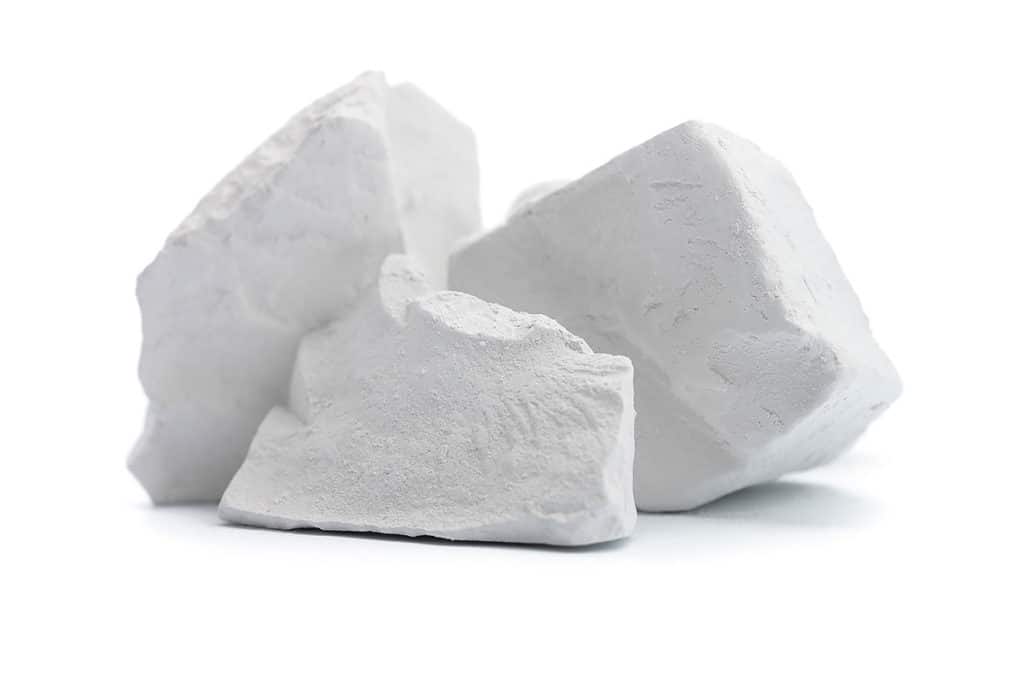Before drilling a well, during what is known as the “exploration phase,” geologists must take into account where a well should be placed. To find hydrocarbons, oil and gas wells must be located in areas where there is a successful petroleum system. A petroleum system consists of several elements: source rock, overburden rock, migration pathway, reservoir rock, seal (or caprock) and trap. If all of the elements are present, the processes necessary for a petroleum system include: generation, migration, accumulation and preservation of the hydrocarbons. Geologists use several methods and data types to analyze these petroleum systems including nearby wells, remote subsurface imaging (for example, seismic data), core samples, etc. Let’s take a look at some of the elements and processes of a petroleum system more closely.
Is there a Source Rock?
Organic Matter
Source rocks are organic rich rocks, responsible for the deposition and accumulation of hydrocarbons. Organic rich source rocks can originate from a variety of sources including shallow seas, lakes, and land. Source rocks may have a marine origin if organic matter from algae or plankton living at or near the surface of the ocean sink and accumulate on the seafloor in anoxic environments (oxygen depleted areas on the bottom of the sea-floor). Similarly, source rocks may represent deposits of freshwater algae that accumulate in an anoxic environment at the bottom of a lake. Source rocks can also originate on land from organic rich matter from plant material of long ago. This breaks the myth that hydrocarbons once came from dinosaurs!
Let’s take a look at the specific case where organic rich rocks accumulate in a special type of lake. In this video from our colleague Dr. Mike Arthur of Penn State University, you will see how the process of hydrocarbon generation occurs.
Courtesy TOP Energy Training
Hydrocarbon Generation Quiz
Now that you have had the opportunity to watch a short video on hydrocarbon generation, please answer the following two questions:
What is organic matter, the basis for generating hydrocarbons, generally made up of?
Extinct Dinosaurs
Incorrect.
Organic material from dinosaurs is not densely enough populated to create enough organic matter for source rock.
Plankton and algae
Correct.
Tree Leaves
Incorrect.
None of the above
Incorrect.
A(an)_____ lake consists of layers of water that do not intermix, perfect for generating hydrocarbons.
Oxic
Incorrect.
Deep
Incorrect.
Saline
Incorrect.
Meromictic
Correct.
Temperature Windows
After time, the organic material in source rocks is buried by thick accumulations of sediment and rock (overburden), and begins to form into a material known as kerogen that then generates hydrocarbons. However, in order for kerogen to produce hydrocarbons it must be in a certain temperature window. If the temperature is too low oil will not be produced, but if the temperature is too high the oil and gas will be overcooked! One of the best examples of a source rock is shale.

This figure shows a simple image of a source rock made up of shale, one of the most prominent types of source rocks.
Let’s take a look at the oil and gas window, those range of temperatures where we can expect to have kerogen ‘cooked’ to yield hydrocarbons. In this video from our colleague Dr. Mike Arthur of Penn State University, you will see how the oil and gas window works using an example of rocks deposited 390 million years ago in the U.S.
Courtesy TOP Energy Training
Oil and Gas Window Quiz
Now that you have had the opportunity to watch a short video on the oil and gas window, please answer the following three questions:
True or False: Temperature gradients vary from basin to basin.
True
Correct.
Temperature gradients vary from basin to basin depending on basin type and when it was formed.
False
Incorrect.
Temperature gradients vary from basin to basin depending on basin type and when it was formed.
At what temperature does peak oil generation occur?
120° Farenheit
Incorrect.
160° Farenheit
Incorrect.
160° Celsius
Incorrect.
120° Celsius
Correct.
Why is there no liquid oil brought up to the surface when drillers encounter “dry gas?”
The liquid oil was cooked out to gas as temperatures exceeded the oil window
Correct.
There is no liquid oil present in that particular location
Incorrect.
Temperatures peaked below the oil window, therefore generation of liquid oil was not possible
Incorrect.
None of the above
Incorrect.
Migration Pathway
Once a source rock has successfully generated hydrocarbons, some of the oil and gas is expelled from the rock and the process of migration begins. The hydrocarbons migrate to a reservoir rock where the oil and gas can accumulate in high quantities due to the porosity: open pore spaces within the rock, typically defined as a percentage. Migration pathways depend on the geologic structure and composition of the rock. Hydrocarbons often migrate through permeable pathways and fractures; and open pore space allows fluid flow. We will see this process in the next video.
Reservoir Rock
Once hydrocarbons migrate away from the source rock they are stored within reservoir rocks that often feature very high porosity. Good examples of reservoir rock include sandstone and limestone. Typical porosities for sandstone range from 5% to 30%, whereas limestone can feature porosities of up to 50%. The larger the free pore space, the more hydrocarbons can be stored.

This figure shows a simple image of a reservoir rock made up of sandstone, one of the most prominent types of reservoir rock.
Caprock/Seal and Trap
To ensure hydrocarbons do not escape to the surface, they are trapped by an impermeable caprock or seal overlying the reservoir rock. A caprock features very low permeability to ensure the hydrocarbons do not flow through this seal. There are many different types of caprocks including salt, chalk, and shale. In addition to an overlying impermeable rock layer, the rock layers must be geometrically arranged as a trap to allow the hydrocarbons to accumulate. There are two different types of traps, known as structural traps and stratigraphic traps. Structural traps feature various methods where the rock has been deformed from its original horizontally layered geometry through folding, faulting, and tilting. You will see a specific type of structural trap, an anticline, where the rocks have been folded in the next video. A stratigraphic trap consists of favorable juxtapositions of reservoir and sealing rocks formed at the time of deposition.

This figure shows a simple image of a caprock made up of chalk, one of the most prominent types of cap rocks that traps hydrocarbons in the reservoir.
Let’s take a look at what happens to oil and gas after they are generated and expelled from the source material. In this video from our colleague Dr. Mike Arthur of Penn State University, you will find out where the hydrocarbons go and how they become trapped to form an accumulation. And importantly, once an accumulation of hydrocarbons is present, those hydrocarbons must be preserved in that accumulation until millions of years later when industry drills into the reservoir rock and produces the hydrocarbons.
Courtesy TOP Energy Training
Hydrocarbon Origination and Accumulation Quiz
Now that you have had the opportunity to watch a short video on hydrocarbon generation, please answer the following two questions:
What two questions must be answered to find the “right” spot for drilling?
Where did the hydrocarbons originate and what depth is the source rock?
Incorrect.
Where did the hydrocarbons originate and where did they accumulate?
Correct.
Where did the hydrocarbons accumulate and what depth is the reservoir rock?
Incorrect.
None of the above
Incorrect.
A _________ has no fissures or pores big enough for the oil to continue its journey to the surface.
Reservoir rock
Incorrect.
Source rock
Incorrect.
Seal
Correct.
Syncline
Incorrect.
Image Credits: Shutterstock.com